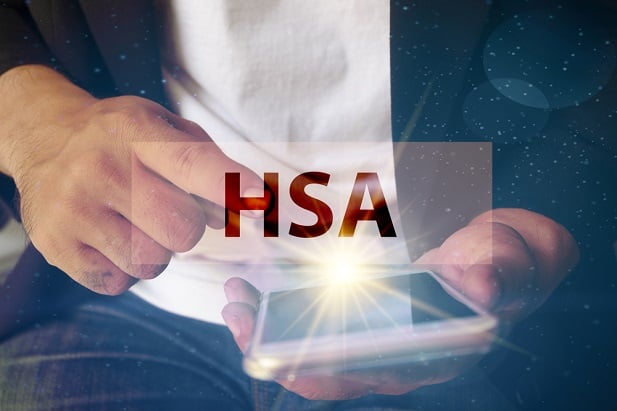It’s been said that our nation is about to experience thegreatest retirement crisis in the history of the world,and it’s not hard to see why.
|Nearly 10,000 baby boomers are reaching retirement age eachday, yet a staggering 45 percent of them report having zero retirement savings and a quarter have lessthan $5,000 saved.
|Compounding the problem, it’s estimated that more than 30million boomers will be managing more than one chronic healthcondition by 2030.
|As concerns around post-retirement costs mount, boomers arerecognizing that their employer-sponsored retiree benefits will notadequately cover their future health care needs.
|Benefits managers, retirement advisors and employers alike arestruggling to find ways to help baby boomers face this new reality,while making the most of their golden years. To guide baby boomerstoward a better plan for retirement and long-term wellness, it’simportant to debunk some common misconceptions:
|Misconception 1: Scare tactics will drive action
Despite the bleak financial outlook, boomers have collectivelymaintained the optimistic, idealistic spirit that defines theirgeneration.
|They grew up fighting to be the change they wished to see in theworld. As a result, these eternal optimists are not motivated by“doom and gloom” messages around aging, finances and health.
|Rather, they are drawn to aspirational ideas of this nextchapter, for they view retirement as the time to reinventthemselves and experience life in new and exciting ways.
|An example of this in action is AARP’s “Disrupt Aging” campaign. It ditches the lonelyporch swing and microwave dinner-for-one clichés of the past andapproaches retirement in a new, refreshing way that resonates withBoomers eager to live a life of possibility, connection and growthafter 50.
||

Misconception 2: Gray hair and technology don’t mix
This couldn’t be further from the truth.
|Take the ride-sharing app Uber, for example. Industry expertsestimate that nearly 40 percent of riders are over the age of50.
|And guess who purchases more than 40 percent of Apple products?
|This motivation to try new things and experiences is alsoevident when it comes to health technology. Consider that boomersare 98 percent more likely to visit health websitesthan the average Internet user.
|And since more than 44 percent of boomers download apps at leastonce a month, they’re also regularly accessing health and wellnessinformation on their mobile devices. They’re also increasingly opento technological advancements such as digital record keeping,telemedicine and remote diagnostics, remote/automated monitoring,chip implants and home-installed sensors.
|Related: Study: 50-plus population has huge effecton economy
|Boomers are embracing technology that can make their livesbetter—but they want it on their own terms. That means health andwellness devices, apps and services must be reimagined with boomersin mind.
||
Misconception 3: Change aversion comes with age
Many boomers have witnessed their parents age, decline and passaway, and have firmly resolved to do things differently than thegeneration before them.
|Boomers want to remain active, live independently as long aspossible and fully enjoy their retirement years—or in many cases,decades. They recognize the need for change, and are committingto live healthier lifestyles and take a more active role in theirhealth and wellness options.
|Related: Golden years redefined as older Americansbuck trends and keep working
|In turn, health plans must encourage and reward this engagementand proactivity, while providing helpful educational tools andongoing guidance to prepare boomers for retirement. With the propersupport through this time of great transition, boomers will learn,adapt and thrive.
|Baby boomers may be the wealthiest generation, but they are alsothe least prepared for retirement.
|Baby boomers are redefining what retirement and long-term healthmeans and how they are connected. If their employer offers ahigh-deductible health plan (HDHP), boomers should use health carespending accounts (HSAs) as another tool to help plan forretirement.
|Employers are turning to defined-contribution health plans androunding out the new retirement planning mix with HSAs to offermore flexible ways to ease the rising financial burden of healthcare in retirement.
|However, boomers must quickly learn how to navigate new programslike HSAs as finance, health care and technology continue toconverge, so health care initiatives must provide long-termengagement and an integrated experience to be effective.
|Current financial, health care and technology systems andindustries must evolve to meet the needs of baby boomers, but trueprogress will only be realized if these changes are grounded inoptimism, compassion and engagement.
Complete your profile to continue reading and get FREE access to BenefitsPRO, part of your ALM digital membership.
Your access to unlimited BenefitsPRO content isn’t changing.
Once you are an ALM digital member, you’ll receive:
- Critical BenefitsPRO information including cutting edge post-reform success strategies, access to educational webcasts and videos, resources from industry leaders, and informative Newsletters.
- Exclusive discounts on ALM, BenefitsPRO magazine and BenefitsPRO.com events
- Access to other award-winning ALM websites including ThinkAdvisor.com and Law.com
Already have an account? Sign In
© 2024 ALM Global, LLC, All Rights Reserved. Request academic re-use from www.copyright.com. All other uses, submit a request to [email protected]. For more information visit Asset & Logo Licensing.








